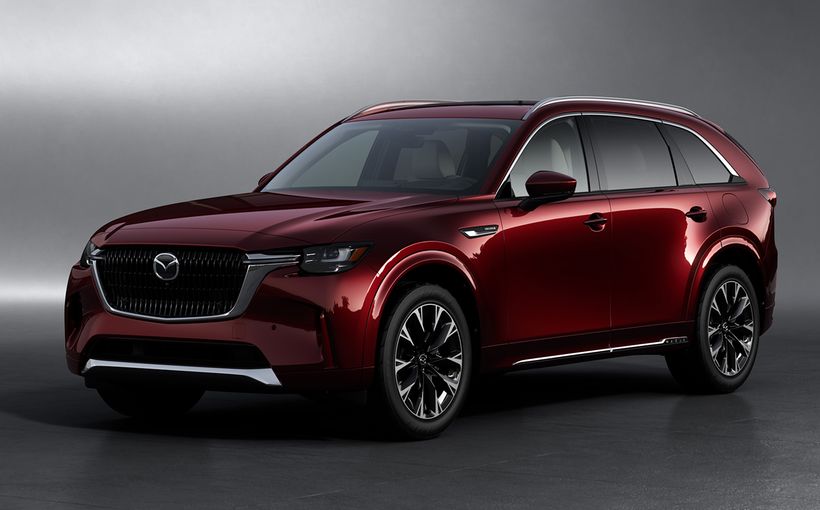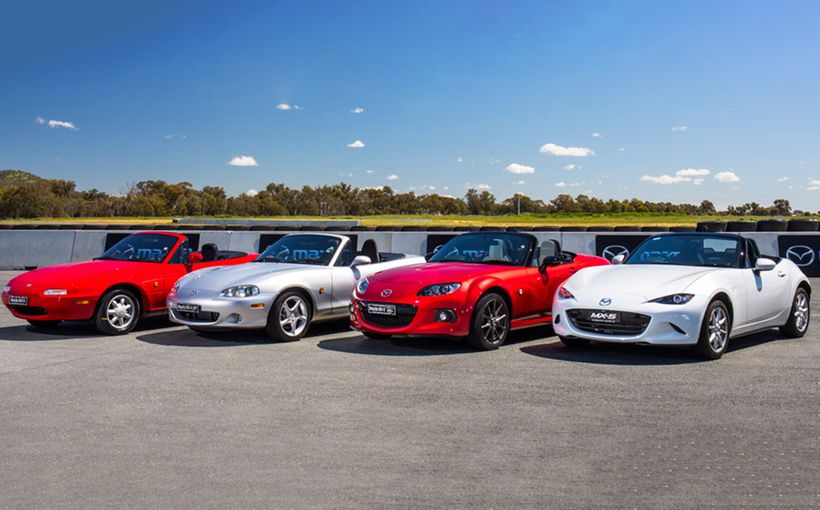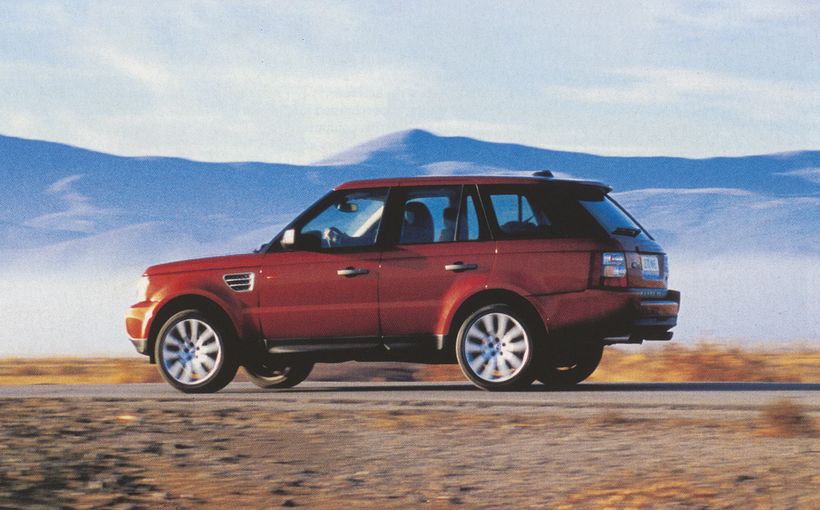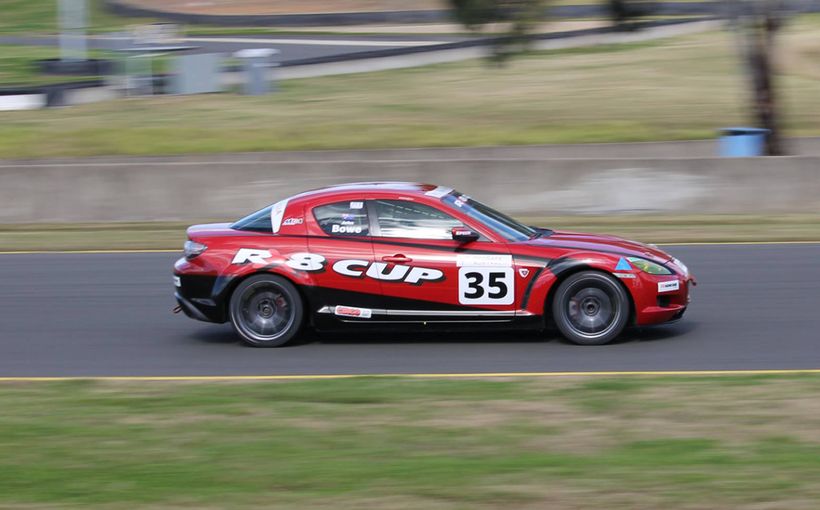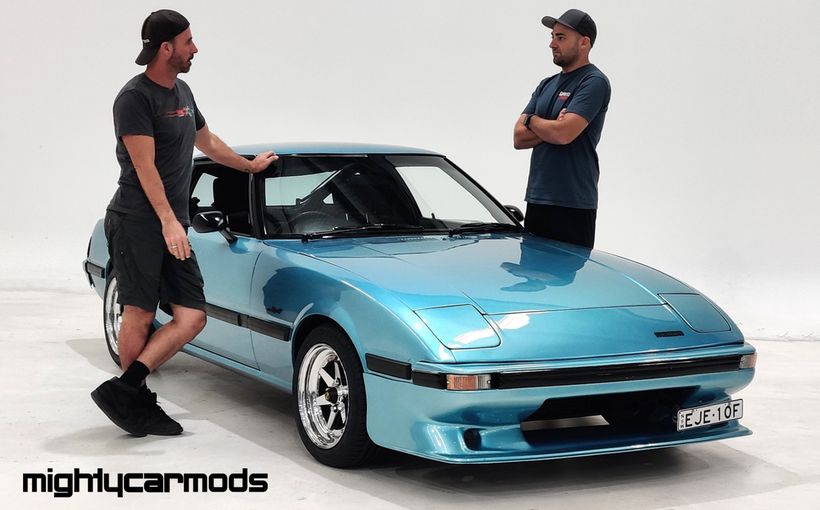
The brochure says this is the safest racetrack in the world. Right now, I'm not so sure. We're flat out in third and sideways through the slightly off camber left hander, opposite locking at, oh, 130 or so down towards the fourth gear right-left kink that is one of the fastest sections of the undulating 3.7 km Tl circuit, a privately owned grand prix track tucked away in the backwoods behind Osaka. The gravel trap to the right is way too small; to the left, a crisscross of black lines ends in an expensive smear of yellow on a concrete wall that's way too close. My first quick corner in Mazda's hot new RX-7 and, quite frankly, it feels just a little spooky ...
The menace in the machine fades after a few more hard laps, once I learn the RX-?'s chassis will telegraph its punches clearly, concisely and consistently. The steering goes light as gentle understeer sets in immediately after turn-in. The front quickly bites and, as power transfers the weight rearwards, the outside rear tyre loads up, then slips. But the transition is smooth, progressive and reassuringly linear, not whip snap sudden.
What continues to surprise, however, is the relative ease with which the tail can be broken loose on almost any corner, fast or slow, even at quite moderate throttle openings. It's entertaining and spectacular. But it also wastes a lot of time. Mazda claims the new RX-7 will pull lateral G numbers equivalent to those of Honda's NSX; subjectively, neither of the two early build proto- types at the Tl circuit come close. Tyre pressures? Track surface? A quirk of the Torsen torque sensing limited-slip rear diff? Who knows ... The jury's out until we test a production model on home turf.

Whatever the final result, the RX-7 will never be relaxing to drive really fast. You won't find four-wheel steering, four-wheel drive, active suspension or any of the other hi-tech, microchipped goodies which are designed to make drivers look good under pressure in Mazda's new sportster. All you get is a grunty engine, low weight, and straightforward mechanical solutions to the problems of roll, dive, squat and yaw. It's the perfect postmodern sports car, and the job of making it work properly is entirely up to you. "We have targeted the real sports car enthusiast much more directly," says RX-7 project manager Takaharu 'Koby' Kobaykawa with a wry grin, "not people who are impressed with specification lists."
The new RX-7 is very much Koby's car. A worldly, urbane sports car enthusiast whose father once owned a pre-war supercharged MG K3, he has been given unprecedented freedom by Mazda management to develop this third generation RX-7. "We didn't listen too much to the market," Koby admits, "instead, we tried to create what we liked." The result is a thoughtful , intricate and beautifully integrated sports car that is destined to become a modern classic.
Koby has moved the RX-7 one step closer to serious supercar status. It's lighter, more powerful and more compact. Although, at 4295 mm long and 1760 mm wide, the new car is 5 mm longer and 65 mm wider than the old model , the bonnet line is 70 mm lower, the front overhang 125 mm shorter, and the roofline 's been shaved 35 mm. More importantly, the centre of gravity and driver's hip point have been dropped 30 mm, and the wheelbase trimmed by 5 mm to 2425 mm. The tightly drawn cabin means there's minimal space inside for rear seat passengers or luggage, although there's room aplenty for two. Koby makes no apologies for this; if you want to take the family, buy a sedan.

It would have been easy for the new RX-7 to have turned out just another amorphous aero blob, but the combined efforts of Mazda's Hiroshima and California design studios have resulted in a superb shape with real presence and just a hint of retro character. Two full-scale clay models - one from each studio - were commissioned from nine original proposals. Unable to choose between the two, the design team simply amalgamated them. The Zagato-style double bubble roofline and the superbly integrated rear lights are straight off the California styled RX-33 concept car.
Light weight was one of Koby's key design goals for the new RX-7, and weight reduction of components was given high priority in every aspect of the car's development The overall glass area, for example, was reduced, saving 9 kg. The main reason for the beautiful sweep of the doors is a 6 kg weight saving: the extra strength gained from having a curve instead of a corner at a key structural point is a bonus. Exhaustive aerodynamic research resulted in improved airflow and a smaller, 1 .2 kg lighter radiator. Other clever weigh saving ploys include the development of a low back pressure single exhaust system for a saving of 8 kg; an aluminium bonnet which chops 10 kg off the top of the car; a new ignition system which features coils mounted directly to the block, as in the Le Mans winning 7878 racer, and a simplified crank angle sensor that saves 2.3 precious kilos.

Koby claims the 16 x 8 five spoke forged alloy wheels are the lightest production units in the world. His passion for weight reduction has extended to specifying special alloy rims for the spare, and even an aluminium jack. All up, with air-conditioning and electric windows, the new RX-7 weighs 1290 kg, some 80 kg less than Honda's all aluminium NSX, 200 kg less than the Nissan 300ZX, and a staggering 430 kg less than Mitsubishi's four-wheel drive, four-wheel steer, twin turbo 3.0 litre V6 3000 GTO. Mazda claims the car's power to weight ratio is the best of any mass produced sports car.
Heart of the new RX-7 is of course the rotary engine. Mazda's rotary is a triumph of dogged persistence over engineering difficulty. While giants like General Motors gave up on Felix Wankel 's revolutionary powerplant, Mazda has overcome emissions problems, improved fuel consumption, and even won Le Mans with it Hydrogen burning rotaries of the 21st century are under development at Mazda's Yokohama R&D centre. The new RX-7's twin rotor 138 has been revamped from the crankshaft out But the major change is a new twin sequential turbocharging system which has boosted power from 132 kW at 6500 rpm for the old single turbo version, to a healthy 190 kW at the same revs, and torque from 247 Nm at 3500 rpm to 294 Nm at 5000 rpm.

The system uses a computer controlled valve arrangement which ensures only the primary turbocharger is used below about 4500 rpm. A pre-revolution control valve bleeds gas into the second turbo to get it spinning before the main valve is opened, thus reducing turbo lag. The system builds more boost more rapidly at low to medium speeds. Mazda's figures show a higher maximum boost figure is reached in two thirds the time of the old system at wide open throttle in second gear, for example.
The sequential twin turbos give a power curve you could draw with a ruler between 1 000 and 6000 rpm and a torque curve that's as long, wide and flat as the top of Ayers Rock. The power delivery is as impressively linear on the road as it looks on paper - the engine pulls strongly from idle, and keeps pulling all the way to the 7500 rpm redline. Mazda hasn't released any official performance data for the new RX-7 but, over a quiet sake, insiders will admit to a standing 400 metre time of about 13.5 seconds. That's about line-ball with Nissan's awesome twin turbo, four-wheel drive GT-R.

Only one version of the new RX-7 is available. Japanese customers are offered variations in equipment levels, but mechanical options are limited to the choice of five speed manual or four speed automatic transmissions. The decision to drop the normally aspirated and convertible models from the new range (the old convertible will remain in production for the time being) was taken in order to keep development and production engineering costs at about the same level as the previous model, says Koby. However, all those aluminium components and high quality suspension parts mean the cost of production per car is much higher.
Don't expect much change from $80,000 when the new RX-7 goes on sale here next March. It's a big leap up from the $54,000-odd charged for the old RX-7 Turbo, and a good $15-$20,000 more than its most logical rival s, the Nissan 300ZX and Toyota Supra Turbo. Is it worth it? That depends on whether you 're a real sports car enthusiast.

Go Back in time with the Wheel Archive. Get FREE access to 5 years of Wheels archive content now!  Protect your Classic. Call Shannons Insurance on 13 46 46 to get a quote today.
Protect your Classic. Call Shannons Insurance on 13 46 46 to get a quote today.



